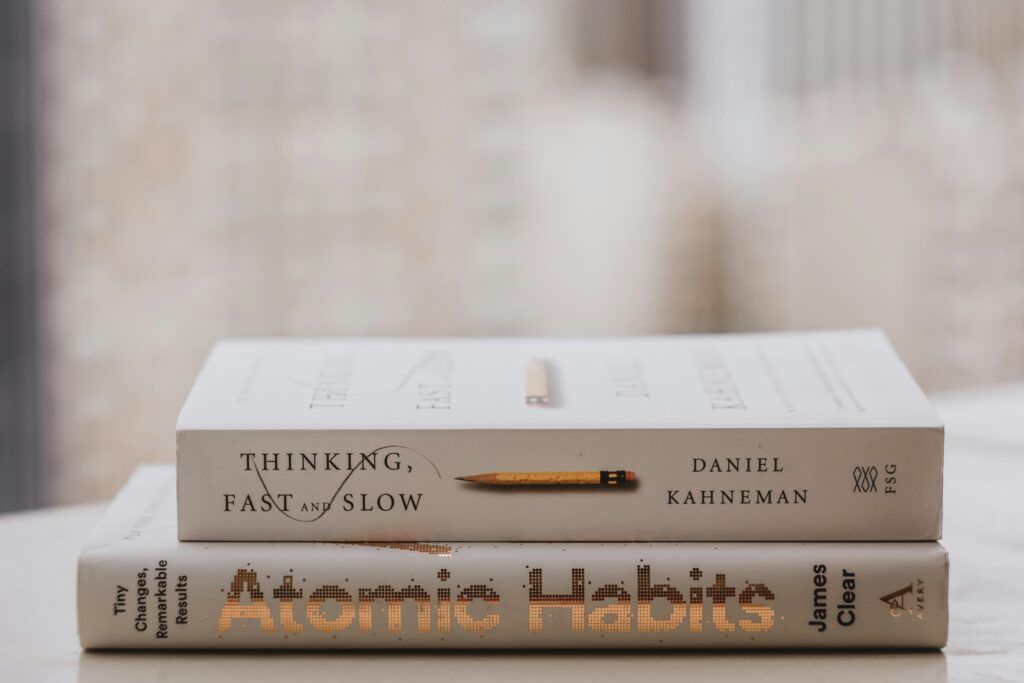If you’ve started learning Spanish, you probably know it takes some real dedication, especially when motivation dips or life gets busy. Building a set of solid daily habits is one of the best ways I’ve found to keep the language adventure moving, even if it’s just a few minutes here or there. With some creative tweaks, sticking with Spanish can feel much more doable and fun. Here are my top 10 habits that keep Spanish learning fresh, challenging, and motivating every single day.

Why Habits Matter More Than Motivation in Language Learning
Motivation can come and go, but habits stick around. If you want to make real progress in Spanish (or any language), setting up daily habits works way better than waiting for inspiration. I find that even on those “not feeling it” days, five minutes of something familiar, like a short podcast or a quick vocab review, keeps your Spanish muscle growing.
Atomic habits—those small routines that add up—are super useful here. For instance, studying at the same time and place daily makes your brain expect “Spanish mode.” Over time, these routines get automatic, and that’s when you start seeing results.
This is not to say that motivation is not important. I believe that we should do our best to be motivated, however, motivation should not be the only or the most important factor when it comes to learning. If you want to find ways to stay motivated you can go to my article The Secret To Staying Consistent: Building A Spanish Study Routine where I give more details on how to build a routine and remain motivated.
My 10 Favorite Spanish Learning Habits for Everyday Motivation
- Commit to a Tiny Daily Session
Even five minutes counts. Scheduling a quick review right after breakfast or before bed keeps Spanish in your routine. It’s less about intensity and much more about consistency. - Mix Up Your Resources Often
I love bouncing between apps, flashcards, podcasts, and graded readers. Switching things up keeps boredom at bay and stops you from getting stuck in a rut. - Watch Shows and Movies with Spanish Audio
Entertainment in Spanish is a game changer. Subtitles can help, but challenging yourself to watch scenes without them from time to time boosts your listening skills. Spanish movies, telenovelas, and even cartoons work well—just pick topics that actually interest you. - Listen to Music and Podcasts (with or without Subtitles)
I’ve logged hours learning French just by playing songs or podcasts while commuting or doing chores. Track down lyrics online to follow along for extra vocab, or dig into Spanish podcasts about your hobbies. - Set Achievable Short- and Long-Term Goals
Goals keep you focused. You could aim to learn 10 new words a day, finish a unit in your app this week, or have a 15-minute chat in Spanish. For example, I have set myself the goal of finishing half a chapter in Busuu every day. Using CEFR levels (A1–C2) helps you see real progress and celebrate wins along the way. - Immerse Yourself with Interests and Tech
Switch your phone or social apps to Spanish—it’s awkward at first but you pick up phrases so fast. Look for cooking videos, sports, or whatever hobbies you love, but all in Spanish. That way, you’re learning phrases you’ll actually use. - Connect with a Tutor or Language Partner
Accountability is powerful. Regular conversations with a tutor or a language exchange partner on platforms like iTalki or Tandem make a big difference. Knowing someone’s expecting you helps you show up, even on busy days. - Write Something Every Day
No need for perfection. Even jotting a quick journal entry, a to-do list, or a message to a language buddy gets your brain using Spanish. Over time, your writing skills get better naturally. - Use Multisensory Approaches
Walk around while listening to lessons, or act out verbs and phrases. Blending movement with audio or visuals really helps, especially if you’ve got ADHD or dyslexia. Breaking up study with movement helps stick things in memory. - Take Smart Breaks and Track Your Wins
The Pomodoro method rocks: 25 minutes focused, five-minute break. After each session, jot down what you improved or learned. Celebrating small wins helps you stay motivated.
Building a Long-Term Spanish Learning Mindset
It’s crucial to remember that fluency doesn’t happen overnight. Reaching real proficiency in Spanish can take years (often 1,000+ hours). Viewing this as a slow burn makes you less likely to get discouraged. I focus on the idea that every little habit, no matter how tiny, pushes me forward. It’s very important to remember that if you miss a day (or a week), it’s not the end of the world. Cut yourself some slack and just get back at it when you can.
Keeping Spanish Learning Fun and Practical
If learning feels boring or cut off from your real life, enthusiasm drops. Here’s what helps me keep my French fresh and practical that can help you with your Spanish:
- Use Apps with Game Elements: Many apps, like Duolingo and Memrise, use streaks and speed reviews to make learning like a game. These mini rewards make it easy to look forward to daily practice.
- Pursue Hobbies in Spanish: Enjoy yoga, art, or soccer? Find Spanish content about your favorites. You stumble upon useful vocab and real cultural nuggets effortlessly.
- Educate the algorithm of your favorite social media: It doesn’t matter if you use Instagram, Facebook, TikTok or YouTube. Follow, like and share content from your favorite creators. By doing so, the algorithm will know that you are interested in that content and will show you more and more. That way, you can take advantage of those scrolling moments we have during the day.
- Join Study Groups or Communities: Online communities—Facebook groups, Discord servers, or forums—offer challenges, feedback, and a place where you belong.

Staying Accountable: Why It Matters
Having something to answer to can make all the difference. Here are some methods I trust:
- Weekly Tutor Check-Ins: That “homework” push gets you prepped. Tutors catch weak spots and help you keep upping your game.
- Language Buddy Systems and Exchanges: Swapping voice messages keeps you active. Apps like HelloTalk or Tandem help track down learners at your level.
- Track Progress Publicly: Post updates on social or learning forums. It’s a little silly, but when others can see your progress, you feel far more motivated to keep at it. I see that many do this in Threads and it seems to work for them.
Multisensory Techniques and Tech Tools for Focus (ADHD/Dyslexia Friendly)
Not every brain works the same way. If you have ADHD or dyslexia, learning techniques that engage your senses and attention are very important:
- Chunk Skills: Zero in on one thing (like listening, reading, or speaking) per session. That focus cuts down on overwhelm and helps you measure progress.
- Move When You Study: Read flashcards while taking a walk; listen to auditracks while stretching. Moving gets your mind firing and makes it easier to remember stuff.
- Short Sessions and Good Breaks: Use short study blocks (five to twenty-five minutes), then step away for a bit. A simple kitchen timer works just as well as any app.
- Make the Most of Audio and Visual Tools: Anki and other flashcard apps pair audio cues with visuals. Apps like LingQ help by mixing reading and listening, and dictation or recording apps help with both pronunciation and listening skills.
Common Challenges and Simple Solutions
Everyone hits a bump sometimes. Here’s what pops up the most—and how to plow through it:
- Boredom: Mix in something new: a podcast, a comic, or a new language buddy. Anything different shakes things up and keeps you interested.
- Feeling Overwhelmed: Pick just one, tiny, achievable goal. Grammar got you down? No worries; flip on a Spanish TV show and call it a win for the day.
- Plateaus: Happens to everyone. Try a new resource, step up to a tougher book, or schedule a deep chat with a tutor or partner. Shaking up your learning zone wakes up your progress.
Frequently Asked Questions
How much Spanish should I study per day?
Consistency beats raw study time. Ten to twenty minutes daily works for lots of people, but even five regular minutes makes a difference if you have a packed schedule.
What resources are best for beginners?
Try apps like Duolingo and Memrise, podcasts like Coffee Break Spanish, and shows on Netflix with Spanish audio. Graded readers are also great starting points.
What should I do if I lose motivation?
Switch it up—a new show, a different partner, or reviewing your old goals to see progress can help. Everyone hits a slump, but it’s always ok to adjust your approach and try something fun again.
Wrapping Up: Make Spanish Part of Your Every Day
Making Spanish something you do daily helps keep your momentum strong. Tiny actions add up, and a few smart habits really change how you experience language learning. Find routines that feel fun, keep things lively, and switch up your approach whenever you need a boost. With steady practice, Spanish sneaks into your daily life, and the whole process starts feeling like a win instead of a struggle. Jump in, stick with it, and let your Spanish adventure grow.
Guess what? When you click and buy through our links, you’re not just boosting your Spanish skills—you’re supporting us at no extra cost. It helps us keep delivering top-notch tips and resources to you. It’s a win-win for both of us!


